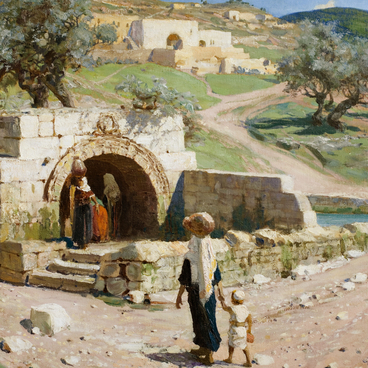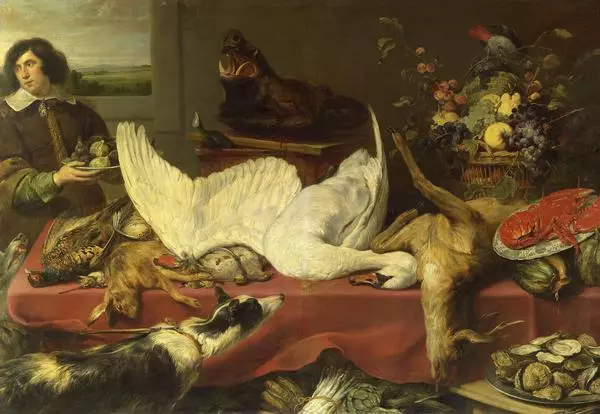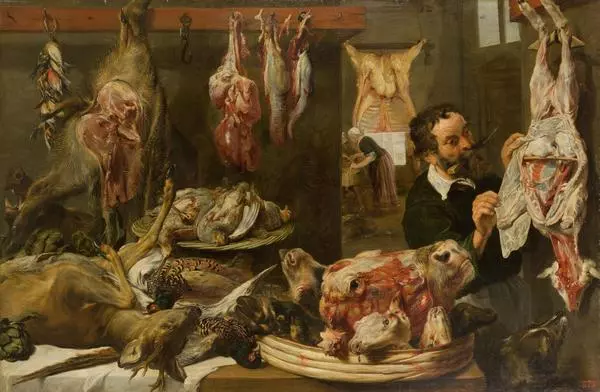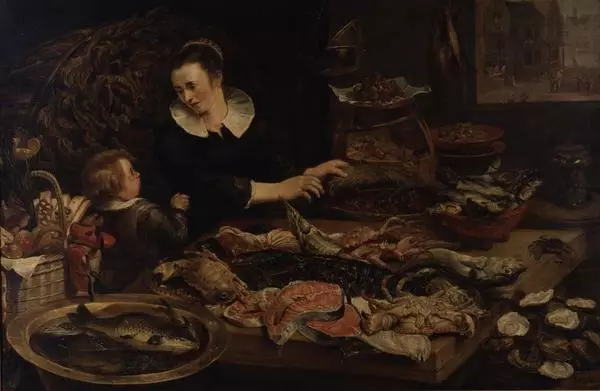Frans Snyders was one of the most influential Flemish painters of the 17th century, a brilliant still life master and leading animalist. Frans Snyders was born, lived, and died in Antwerp. He used to leave his hometown only to do work in Italy. The talent of the future artist revealed very early, and at the age of 13, he became a pupil of Peter Brueghel the Younger. At 22, the young man was admitted to the Antwerp Guild of St. Luke — a workshop organization that united artists. The artist’s skill was praised by Peter Paul Rubens, an artist who gave a grounding of the Flemish Art of the Baroque era.
From 1613, Snyders worked in Rubens’s workshop, depicting animals, flowers, and fruit on his canvases. As an independent artist, the young painter started with still lifes made up of several items, mainly baskets and fruit vases. Then he moved to monumental large-format canvases depicting dead game, fruit, flowers, and vegetables placed on tables or counters.
Praising nature’s richness and the land’s bounty, Snyders superbly depicted shape, texture, and objects’ color. He created luxurious decorative compositions, styled in a calm, elegant range. A red tablecloth was one of his favorite motifs in the artist’s work — it served as a color accent and united various colors.
In the intimate still life genre, he introduced an aspiration of real life, refined the plot, producing an atmosphere of dazzling pageantry on his canvases. His craftsmanship allowed him to combine the gifts of nature into a single ornamental unit. Therefore, you can always feel the joy of being, admiration of the outside world in the paintings of Frans Snyders. He was called ‘Still Life Rubens’ for loving abundance, beauty, and exuberant in his paintings.
Snyders created his works for eminent customers. Philip IV, King of Spain, was among them. Monumental still lifes of the artist generally served as decoration of dining rooms in rich houses. Remaining loyal to nature, the artist has always been precise in conveying the smallest details of nature: masterly depicting the shape and texture of fruit and vegetables, wool, and plumage of animals and birds.
From 1613, Snyders worked in Rubens’s workshop, depicting animals, flowers, and fruit on his canvases. As an independent artist, the young painter started with still lifes made up of several items, mainly baskets and fruit vases. Then he moved to monumental large-format canvases depicting dead game, fruit, flowers, and vegetables placed on tables or counters.
Praising nature’s richness and the land’s bounty, Snyders superbly depicted shape, texture, and objects’ color. He created luxurious decorative compositions, styled in a calm, elegant range. A red tablecloth was one of his favorite motifs in the artist’s work — it served as a color accent and united various colors.
In the intimate still life genre, he introduced an aspiration of real life, refined the plot, producing an atmosphere of dazzling pageantry on his canvases. His craftsmanship allowed him to combine the gifts of nature into a single ornamental unit. Therefore, you can always feel the joy of being, admiration of the outside world in the paintings of Frans Snyders. He was called ‘Still Life Rubens’ for loving abundance, beauty, and exuberant in his paintings.
Snyders created his works for eminent customers. Philip IV, King of Spain, was among them. Monumental still lifes of the artist generally served as decoration of dining rooms in rich houses. Remaining loyal to nature, the artist has always been precise in conveying the smallest details of nature: masterly depicting the shape and texture of fruit and vegetables, wool, and plumage of animals and birds.






